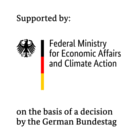IGF 22082 N

| Period: | 01.10.2021 - 31.03.2025 |
|---|---|
| Partner: | |
| Founder: | AiF |
| Project Manager: | Dr. Adrian Anthes |
| Team: | Electrolytic Corrosion |
The press-hardened manganese-boron steels (e. g. 22MnB5, 20MnB8) are currently the standard for safety-relevant components in the automotive sector (e. g. B-pillars). The innovative process offers the advantage of high strengths that can be achieved in the press-hardened state (approx. 1500 MPa vs. approx. 1100 MPa for cold forming) and an inexpensive alloy concept. The changed manufacturing process, however, has different requirements for the corrosion protection of the components, which have not yet been fully resolved. In particular, the high austenitizing temperatures of the manganese-boron steels of 900 °C to 950 °C lead to an oxide scale on the substrate surface, which then has to be removed in a laborious manner. In addition, the wear on the pressing tool increases due to the hard oxide scale. In order to minimize the steel oxidation during press hardening, AlSi-layer systems are predominantly used at the moment. However, these adversely affect the furnace guide rollers through adhesions and also do not offer any active protection against corrosion for the substrate such as zinc coatings. The corrosion protection of the substrate is becoming increasingly important, since an estimated 60% of all press-hardened components are used in corrosive environments [i].
Zinc has a very low melting and boiling temperature, which creates the risk of liquid metal embrittlement and the formation of brittle Zn-Fe phases. Galvanizing prior to press hardening can currently only be carried out in combination with an intermediate cooling step, which is why the requirements for the base material with regard to critical cooling speed and formability at lower temperatures increase significantly [ii]. One steel producer uses galvanized strip material in a patented indirect press hardening process [iii], but this is not accessible to small and medium sized companies due to the patent situation. For this reason, Zn-coated press-hardened components are only represented in the market with approx. 5% [i].
The aim of the research project is to investigate whether a hybrid layer of zinc in combination with a quasi-ceramic layer (top coat to protect the zinc) can be used to produce press-hardened components with improved residual formability and additional active corrosion protection without the usual post-treatment. Medium manganese steels with adapted conversion kinetics, which allow the process temperature to be reduced to below 780 °C, should be used as the substrate. The cathodic protection introduced by the layer system is intended to significantly increase the service life of components that are already used in areas exposed to corrosive stress and to expand the application of press-hardened components to areas with high levels of corrosive stress.
[i] E. Billur, “Hot Stamping of Ultra High-Strength Steels: From a Technological and Business Perspective“, Springer International Publishing, 2018, ISBN: 3319988700
[ii] T. Kurz, P. Larour, J. Lackner, T. Steck, G. Jesner, “Press-hardening of zinc coated steel - characterization of a new material for a new process.” IOP Conference Series: Materials Science and Engineering. 2016, 159, S. 12025. DOI: 10.1088/1757-899X/159/1/012025
[iii] J. Faderl, M. Fleischanderl, S. Kolnberger, G. Landl, A. E. Raab, R. Vehof, W. Stall, W. Brandstaetter, „Stahlblech mit einer feuerverzinkten Korrosionsschutzschicht“, EP2177641B1, Anmeldetag 09.06.2004, Patenterteilung 24.04.2013.
back

Das IGF-Vorhaben Nr. IGF IGF 22082 N der Forschungsvereinigung Stahlanwendung e.V. (FOSTA) wird über die AiF im Rahmen des Programms zur Förderung der industriellen Gemeinschaftsforschung (IGF) vom Bundesministerium für Wirtschaft und Klimaschutz aufgrund eines Beschlusses des Deutschen Bundestages gefördert.